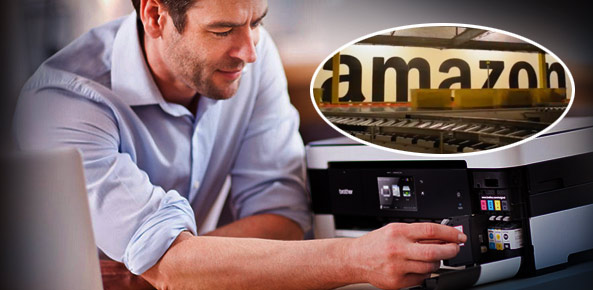Amazon Dash is now live, automatically reorders household supplies

Amazon has come to the rescue of all the forgetful people by introducing the Amazon Dash Replenishment Service on Tuesday, which will enable users to replenish compatible items on a machine without the push of a button. Basically, when the supplies on your machine is running low, the device will automatically order the product from Amazon. So the next time you connected washing machine and is low on laundry soap, it will order the detergent from Amazon automatically!
Not to be confused with Amazon’s Dash Buttons – which negates the need for an online checkout process – the DRS does not require one to order products from a site with a single button push,
Amazon introduced DRS in 2015 alongside its Dash Buttons; however, the service was not operational for connected devices, that is, until now. couch.
So how does one integrate DRS with their appliance to take advantage of this facility?
„DRS can be integrated with devices in two ways. Device makers can either build a physical button into their hardware to reorder consumables or they can measure consumable usage so that reordering happens automatically,” says Amazon.
To begin the integration with the Amazon DRS, the user merely clicks on the Get Started button. Once you review and accept the programs’ terms, as well as give the necessary device information and the „re-order use-case” to Amazon, you’re good to go.
One need not fret about their connected appliance being compatible with DRS as it can be easily integrated with any gadget that has the ability to connect to the Internet. This connection capability can be either through a proxy or directly.
The devices which are currently compatible with Amazon’s DRS include Brothers printers, Gmate SMART blood monitor, a GE washer, a smart pet feeder from Oster, Sutro (a smart pool monitor), etc.
The idea behind the platform was that manufacturers would build Internet-connected products that could link to Amazon’s ordering system. When sensors on the product detect that an item in question is low, it would automatically “call” Amazon to order more. It would only require roughly 10 lines of code to work.
So if you own any of the 45 compatible Brother printers, you will be able to enable automatically ordering of printer ink from its website. Thus, when the ink on the printer is low, a new batch will arrive before the old one runs out.
If you’re wondering how Amazon will know if the ink is running low, it is because the device will be sending it a daily status message, along with the consumption information. For instance, the message will read 10 ounces consumed since last message, the consumable remaining is 32 ounces, the anticipated date when it will run out is Feb. 3, 2016.
For the product to arrive in time before the inventory runs out, the connected device needs to place an order with the DRS a week ahead of the intended delivery date. Once Amazon ships the product, it will inform the device maker – in this case Brother printers – with the delivery date.
https://www.youtube.com/watch?v=vTYcWG6BIDY&width=500&height=350
That’s the kind of experience that people will pay for.
Daniel Rausch, Director of Amazon Devices, tells Fortune that when the device detects that it’s time to re-order, customers will get an email and have 24 hours to cancel the request in case it’s not needed. And there’s nothing stopping someone from filling the product on their own to “trick” the sensor into never reporting an empty product to Amazon.
When asked about getting a discount for signing up for what is essentially a subscription, Rausch said that’s not happening yet. The price a customer pays for each item will be whatever the current price is on Amazon. And when asked about the potential for consolidation of delivery boxes as more and more items are automatically ordered, Rausch says, “that’s not something we are doing today. We can imagine monitoring that inventory level and taking that into consideration for the future.”
Given the ambitions for the Dash Replenishment Service and what people might use it for, I can see why Amazon needs to create its own logistics chain. Imagine how powerful such an effort would be if it gets the last mile down. Or if it was tied with something as large as prescription drugs and connected pill bottles. Finally, we have a plan that could scale QuiQui, the company that delivers pharmacy items by drone to a tiny corner of San Francisco.
Source: techtimes.com & fortune.com
Dariusz Mazurkiewicz – CEO at BLIK Polish Payment Standard
Banking 4.0 – „how was the experience for you”
„To be honest I think that Sinaia, your conference, is much better then Davos.”
Many more interesting quotes in the video below:











